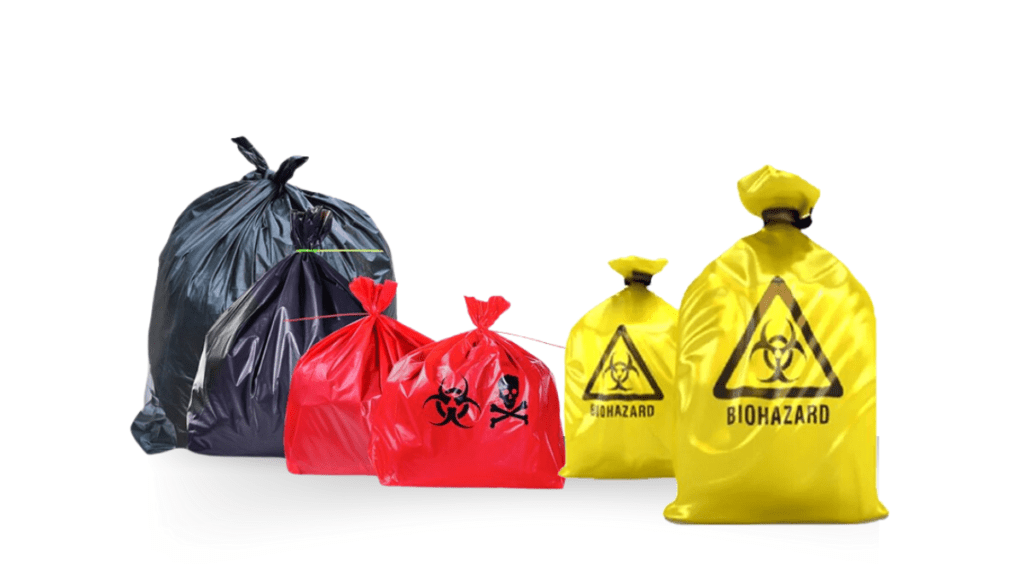When it comes to handling biohazardous materials safely and responsibly, one of the most essential tools you need is a biohazard bag.
These bags are specially designed to contain potentially infectious materials such as used medical supplies, contaminated items, or any other biohazard waste that could pose a threat to human health or the environment if not properly managed.
In this guide, we’ll focus specifically on small biohazard bags and help you understand how to choose the right one for your needs.
Understanding Small Biohazard Bags
Small biohazard bags come in various sizes and colors, but they are typically used for collecting and disposing of smaller quantities of biohazardous waste. They are crucial in healthcare facilities, research labs, and even in some household settings where medical waste is generated.
These bags are designed to be leak-proof, puncture-resistant, and clearly labeled with the biohazard symbol to ensure safe handling and disposal.
Key Considerations When Choosing Small Biohazard Bags
Size:
Small biohazard bags come in different dimensions, typically ranging from 1 quart to 8 gallons. The size you choose should depend on the volume of biohazard waste you expect to generate. It’s important to select a size that comfortably fits your needs without overfilling the bag, which could compromise its integrity.
Strength and Durability:
Opt for bags that are made from high-quality materials such as heavy-duty polyethylene. These bags should be able to withstand tearing and puncturing to prevent leakage of hazardous materials. Look for bags that meet industry standards for strength and durability.
Color Coding:
Biohazard bags are color-coded to indicate the level of precaution required when handling the contents. Small red biohazard bags, for example, are commonly used for non-sharp biohazardous waste. Ensure that the color of the bag you choose complies with relevant regulations and standards in your area.
Closure Mechanism:
A secure closure mechanism is essential to prevent accidental spills or exposure to hazardous materials. Most small biohazard bags come with a twist tie, zip closure, or tape closure. Choose a closure type that is easy to use and provides a tight seal.
Compliance:
It’s crucial to select small biohazard bags that meet regulatory requirements such as OSHA (Occupational Safety and Health Administration) standards in the United States or similar regulations in other countries. Compliance ensures that you are handling biohazardous waste safely and responsibly.
Quantity and Packaging:
Consider how many small biohazard bags you will need and whether they are available in convenient packaging sizes. Some suppliers offer bulk purchasing options, which can be cost-effective for facilities that generate biohazard waste regularly.
Where to Buy Small Biohazard Bags
Finding the best small biohazard bags for your needs involves sourcing them from reputable suppliers who specialize in medical and laboratory supplies. Here are some common sources:
Medical Supply Companies:
Many medical supply companies offer a range of biohazard bags in different sizes and types.
Laboratory Equipment Suppliers:
Suppliers that cater to laboratories often stock a variety of biohazard bags suitable for different applications.
Online Retailers:
Online platforms or specialized medical equipment websites often have a wide selection of small biohazard bags available for purchase.
Local Pharmacy or Medical Equipment Store:
Depending on your location, local pharmacies or medical equipment stores may carry biohazard bags for purchase.
Best Practices for Using Small Biohazard Bags
Segregation
The first step in managing biohazardous waste is to segregate it from regular waste at the point of generation. This prevents potential contamination and ensures that biohazardous materials are properly handled throughout their lifecycle. Designate separate bins or containers specifically for biohazard waste and mark them to avoid confusion.
Proper Sealing
Once biohazardous waste is collected in small biohazard bags, it’s crucial to securely close and seal each bag. This prevents leaks, spills, and exposure to potentially harmful materials.
Most small biohazard bags come with closure mechanisms such as twist ties, zip closures, or adhesive seals. Ensure the closure is tight and secure to maintain the integrity of the bag during storage and transport.
Labeling
Each small biohazard bag should be clearly labeled with the biohazard symbol prominently displayed. Additionally, include important information such as the date when the bag was filled and a brief description of the type of waste contained inside. Proper labeling not only complies with regulatory requirements but also alerts personnel to the potential hazards associated with the contents of the bag.
Storage
Store filled biohazard bags in designated areas that are inaccessible to unauthorized individuals and away from public access.
These storage areas should be secure, well-ventilated, and equipped to prevent accidental punctures or spills.
Avoid storing biohazard bags near food, medications, or other sensitive materials to minimize the risk of cross-contamination.
Disposal
Disposing of filled biohazard bags must be done in accordance with local regulations and guidelines. Depending on your location and the type of waste, disposal methods may include autoclaving (steam sterilization), incineration, or other approved treatment methods.
Follow established protocols to ensure that biohazardous waste is rendered harmless before final disposal.
Conclusion
Choosing the right small biohazard bag is crucial for safely managing biohazardous waste in healthcare, research, and other settings.
By considering factors such as size, strength, compliance, and closure mechanisms, you can ensure that you select the best small biohazard bags for your specific needs.
Remember to purchase from reputable suppliers and always follow best practices for handling and disposing of biohazardous materials to protect both human health and the environment.





